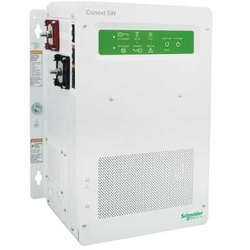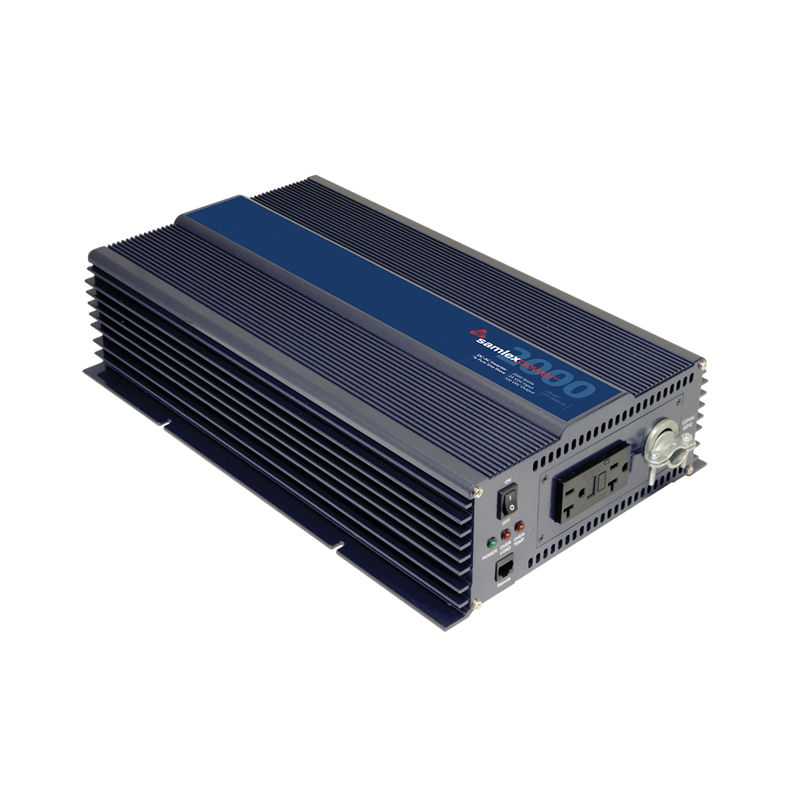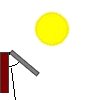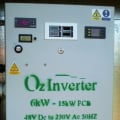Solar System for Off Grid
I live off grid in a 20' camper, run a laptop all day and only LED lights, as necessary. My camper has 12 volt as well as electrical outlets for larger things like an iron or vacuum. I have a water heater and refrigerator as well. Additionally, we are building a home so I'm hoping I can move the system from the camper to use for the house.
I have acquired (6) solar panels that have the following specs:
Pmax 175w
Voc 44.4v
Vpmax 35.4v
Max system voltage 600 v
I am pretty sure I need the MPPT charge controller but I don't know which one. Also, I believe I will need an inverter as well...and how many/what size batteries?
Any suggestions on how to set this up?
Thank you!
Comments
-
Let's start with what you would like to run from this system. And then consider how much money you have to spend. Anything is possible given enough money. Eight golf car batteries would be a good start with a 1500 watt inverter but you can go considerably larger if you have the funds.Island cottage solar system with approximately 2300 watts of panels, 1kw facing southeast 1.3kw facing southwest. All panels in parallel for a 24 volt system. Trace DR1524 MSW inverter which has performed flawlessly since 1994. Outback Flexmax 80 MPPT charge controller four 467A-h AGM batteries. Insignia 11.5 cubic foot electric fridge 1/4hp GSW piston pump. My 32nd year.
-
Thank you, Jim!
I do not have a lot of electricity needs in comparison to the average family's needs.
I am running a 4000 watt generator.
Most electric used scenario - I work online and watch TV for about 16 hours a day average, both using my laptop. I use one LED light fixture. I have a water pump that I run to flush and run from the tap only long enough to wash dishes and do a little cleaning. I also have a couple of cell phone chargers plugged in and a string of miniature christmas lights for my holiday decor. About once a week I dry my hair with a hairdryer, and every two weeks I run the vacuum in about 120 square foot of living area. That is pretty much it. The rest is run by LP gas.
The main problem I am having is that I live in the mountains of Colorado where temps go down to around -30 F. All of my water stays frozen and I am wanting to plug in heating stuff such as a heated blanket made specifically for fresh water tanks in an RV and a few feet of heat tape to keep it all from freezing. I do not run the generator at night and I would love to reserve it for backup elec. I do not have unlimited funds but I am willing to invest in what I need now and to start setting up for the future. I understand the concept "You pay with peanuts, you get a monkey" Lol. -
Generally, heaters are hard on battery systems. If you could periodically run the generator to keep water lines and tank unfrozen that would be a better solution than building a mega solar system. TV's and LED lights are actually quite efficient. One of your biggest concerns though is the amount of time you have for solar charging (always limited in the winter) and the amount of time you need lights and other electrical drains when it is dark outside. Others here (including me) will suggest going with 24 or 48 volts for your system if it is headed for a larger building. Going with a 12 volt inverter limits you somewhat. The batteries I mentioned can be configured for 12, 24 or 48 volts so that isn't really a problem.
Others will chime in here for suggestions for a charge controller as the one I'm presently using is quite dated.Island cottage solar system with approximately 2300 watts of panels, 1kw facing southeast 1.3kw facing southwest. All panels in parallel for a 24 volt system. Trace DR1524 MSW inverter which has performed flawlessly since 1994. Outback Flexmax 80 MPPT charge controller four 467A-h AGM batteries. Insignia 11.5 cubic foot electric fridge 1/4hp GSW piston pump. My 32nd year. -
Well, I fear I'll break out most of my tutorials I've done for facebook solar groups before I finish, but lets get started an see...
Colorado is a good state for solar! a big plus!!
A few direct replies...
Sounds like your fridge and water heater run on gas in the camper. Long term once you build, I would move the fridge to electric. Gas is fine and dependable for now, but sizable solar electric system, shouldn't hve a problem running a fridge and you will reduce your need for gas considerably.
Solar electric tends to be expensive for things that heat and cool. They are the largest demands on electric resources in electric homes, so it follows nicely.
If you want to keep your water from freezing in the camper, it would be best to do lot of insulted skirting around the base nd allow the het to radiate from the camper down. The cheap way to do this is with bales of straw or hay with wind/water barrier, plastic of some type.
I think you should do 'off grid load calculation', northern Arizona Wind and Sun has one and there are other's on line. Don't need to fill in the Email, it will do calc without it. Figure out your current needs as well as your future needs.
https://www.solar-electric.com/solar/calc
I don't know your long term plans, but building and moving into cabin, you will likely want a reasonable size system, more when you can tell us more accurately your needs both now and in the future.
I take it you have some sort of battery system now charged off the genny to run the furnace fan at night?
MPPT charge controller would be needed to run those panels with 12 volt system... but not with 24/48 volt system. I suspect you will want to move to 24 or 48 volt system once you build and would recommend using that system voltage now, rather than having to replace things once you build.
Home system 4000 watt (Evergreen) array standing, with 2 Midnite Classic Lites, Midnite E-panel, Magnum MS4024, Prosine 1800(now backup) and Exeltech 1100(former backup...lol), 660 ah 24v Forklift battery(now 10 years old). Off grid for 20 years (if I include 8 months on a bicycle).
- Assorted other systems, pieces and to many panels in the closet to not do more projects. -
We will also need to know if you have good exposure to the southern sky.Home system 4000 watt (Evergreen) array standing, with 2 Midnite Classic Lites, Midnite E-panel, Magnum MS4024, Prosine 1800(now backup) and Exeltech 1100(former backup...lol), 660 ah 24v Forklift battery(now 10 years old). Off grid for 20 years (if I include 8 months on a bicycle).
- Assorted other systems, pieces and to many panels in the closet to not do more projects. -
706jim said:Generally, heaters are hard on battery systems. If you could periodically run the generator to keep water lines and tank unfrozen that would be a better solution than building a mega solar system. TV's and LED lights are actually quite efficient. One of your biggest concerns though is the amount of time you have for solar charging (always limited in the winter) and the amount of time you need lights and other electrical drains when it is dark outside. Others here (including me) will suggest going with 24 or 48 volts for your system if it is headed for a larger building. Going with a 12 volt inverter limits you somewhat. The batteries I mentioned can be configured for 12, 24 or 48 volts so that isn't really a problem.
Others will chime in here for suggestions for a charge controller as the one I'm presently using is quite dated.Hi Jim,I have quite a lot of sun exposure. It's generally very bright up here at almost 10,000 feet, southern Colorado - we get full-on sun most of the time in winter from about 8am til 4pm (I did not include dusk or dawn in those hours). Once it gets dark outside, I am only watching tv on the laptop and (sometimes) using the LED lamp for about 3-4 hours, maybe 5 or 6 hours on a weekend night or with insomnia.I think I am leaning toward a 24 volt system, as 12 is limited and 24 has room to grow without being overkill.
i don't mind running the generator during the day but it keeps me up at night, and only running during the day doesn't seem to help keep the water from freezing...it freezes so fast!
-
Photowhit said:Well, I fear I'll break out most of my tutorials I've done for facebook solar groups before I finish, but lets get started an see...
Colorado is a good state for solar! a big plus!!
A few direct replies...
Sounds like your fridge and water heater run on gas in the camper. Long term once you build, I would move the fridge to electric. Gas is fine and dependable for now, but sizable solar electric system, shouldn't hve a problem running a fridge and you will reduce your need for gas considerably.
Solar electric tends to be expensive for things that heat and cool. They are the largest demands on electric resources in electric homes, so it follows nicely.
If you want to keep your water from freezing in the camper, it would be best to do lot of insulted skirting around the base nd allow the het to radiate from the camper down. The cheap way to do this is with bales of straw or hay with wind/water barrier, plastic of some type.
I think you should do 'off grid load calculation', northern Arizona Wind and Sun has one and there are other's on line. Don't need to fill in the Email, it will do calc without it. Figure out your current needs as well as your future needs.
https://www.solar-electric.com/solar/calc
I don't know your long term plans, but building and moving into cabin, you will likely want a reasonable size system, more when you can tell us more accurately your needs both now and in the future.
I take it you have some sort of battery system now charged off the genny to run the furnace fan at night?
MPPT charge controller would be needed to run those panels with 12 volt system... but not with 24/48 volt system. I suspect you will want to move to 24 or 48 volt system once you build and would recommend using that system voltage now, rather than having to replace things once you build.Hi Photowhit,Thank you for narrowing down the tutorials for me, I have read and watched So many of them that I think I have pickled my brain in the subject, lol!Yep, heater, fridge, stove, and water heater all currently run on the LP gas. Once we get the cabin built (small, around 800 sq ft), I will use electric for the fridge and a potbelly stove for heating and cooking. I figure the water heater will run on either. No need for an air conditioner here.Right now my camper has straw stacked 3 high all the way around and attic fiberglass insulation around the water tanks and in the wheel wells. It's still not enough. I even have a little 12-volt automobile heater near the largest one and near the pump that I occasionally use - if for nothing else but to keep the pump free.I did the load calc and here are my results:Total avg/day 1566 watt-hoursTotal max/day 2810 watt-hours.Regarding a current battery system, yes, I have two batteries that are charged with the generator during the day. They do not provide much power. I did not know there was a furnace fan running off of it, ha...maybe that's why they don't put out much power by morning time.I am leaning toward a 24 volt system, as 12 is limited like Jim said, and 24 seems like plenty without overkill. Are you saying if I go with 24 that I don't need a charge controller?
-
No, you will need a charge controller, but you could go with a cheaper PWM at least for now. Lots of trade offs and balancing acts in solar. Wiring all the panels in parallel with a DC fuse or breaker for each one will cost a bit more. but you could use a <$100 CC to run.Kimber said:I am leaning toward a 24 volt system, as 12 is limited like Jim said, and 24 seems like plenty without overkill. Are you saying if I go with 24 that I don't need a charge controller?
Bill will likely be along to post his system info based on your projected loads. We use to have a moderator, who's first axiom was that 'loads grow'. Since you have used a generator I suspect you would be willing to use one until you figured out the problems in the future. To verify your current loads, you might plug your camper into Kill-A-Watt meter. Either individually or possibly your whole camper if total loads aren't larger than 15 amps and you have a 'cheater'.
https://www.amazon.com/P3-P4400-Electricity-Usage-Monitor/dp/B00009MDBU
Those panels may be all you need! Cheap charge controllers would be Something like this EPEver 60 amp charge controller. Info says positive ground, but I think the newer model is negative ground. I'd personally stay way from positive ground.
https://www.amazon.com/dp/B07QYHL21C/ref=emc_b_5_t
The Trace/Xantrex/ and now Schneider C60 has been around a long time and is a very reliable unit, if there was any worry bout being code compliant, this is UL 1741 about $150;
https://www.solar-electric.com/tracc6060amp.html
Home system 4000 watt (Evergreen) array standing, with 2 Midnite Classic Lites, Midnite E-panel, Magnum MS4024, Prosine 1800(now backup) and Exeltech 1100(former backup...lol), 660 ah 24v Forklift battery(now 10 years old). Off grid for 20 years (if I include 8 months on a bicycle).
- Assorted other systems, pieces and to many panels in the closet to not do more projects. -
I don't know if it makes any difference, but I've just discovered that I actually have a total of 12 of those panels.
-
12 of those panels will give you about the same output as my system. It happily ran an electric fridge for this past season plus water pump, TV etc. My place is 768 square feet similar to what you are planning to build. Propane use after replacing the gas fridge with electric has gone down significantly. In my case it wasn't so much the cost of gas but rather the difficulty of hauling cylinders to an island by boat.Island cottage solar system with approximately 2300 watts of panels, 1kw facing southeast 1.3kw facing southwest. All panels in parallel for a 24 volt system. Trace DR1524 MSW inverter which has performed flawlessly since 1994. Outback Flexmax 80 MPPT charge controller four 467A-h AGM batteries. Insignia 11.5 cubic foot electric fridge 1/4hp GSW piston pump. My 32nd year.
-
Kimber said:Thank you, Jim!
I do not have a lot of electricity needs in comparison to the average family's needs.
I am running a 4000 watt generator.........I irrigate 2 acres of thirsty trees for 6 months. I pump water for 5 hours a day, large house, shop , 2 fridges and a freezer and only have a 3000w generator.Generator size is not an indicator of how little power you use. You need to measure or at least have some solid estimates (not guesses) of what your loads are. Once you define the loads, you then know your battery size. Once you have a location you can plug into PV watts https://pvwatts.nrel.gov/ and you know how many hours of sun your site gets after all the shade is accounted for, you use that to size the PV array.Just going by "I have these many panels" is going to cost you some generator fuel to keep from damaging the batteries. Some LED lights and lap top are meaningless, you have to use the wattage consumed x the hours used, to come up with how many watt hours of storage you need. Here's an excerpt of a spreadsheet I made to help settle my mind on batteries You may even find, it's easier to build a little shed with a salt box roof, panels on the roof, and batteries & gear in the shed. Keeps the weight and roof leaks off the camper, and you just plug the camper in when you are not driving it.Freezing water. You have to insulate well, and use heat tape sparingly. At your altitude, freezing is a problem. Here, I use a kerosene lamp in the greenhouse and in the the pump shed, for the really cold nights. Easier than propane to control the heat.
You may even find, it's easier to build a little shed with a salt box roof, panels on the roof, and batteries & gear in the shed. Keeps the weight and roof leaks off the camper, and you just plug the camper in when you are not driving it.Freezing water. You have to insulate well, and use heat tape sparingly. At your altitude, freezing is a problem. Here, I use a kerosene lamp in the greenhouse and in the the pump shed, for the really cold nights. Easier than propane to control the heat.
Powerfab top of pole PV mount | Listeroid 6/1 w/st5 gen head | XW6048 inverter/chgr | Iota 48V/15A charger | Morningstar 60A MPPT | 48V, 800A NiFe Battery (in series)| 15, Evergreen 205w "12V" PV array on pole | Midnight ePanel | Grundfos 10 SO5-9 with 3 wire Franklin Electric motor (1/2hp 240V 1ph ) on a timer for 3 hr noontime run - Runs off PV ||
|| Midnight Classic 200 | 10, Evergreen 200w in a 160VOC array ||
|| VEC1093 12V Charger | Maha C401 aa/aaa Charger | SureSine | Sunsaver MPPT 15A
solar: http://tinyurl.com/LMR-Solar
gen: http://tinyurl.com/LMR-Lister , -
Kimber said:
I did the load calc and here are my results:
Total avg/day 1566 watt-hoursTotal max/day 2810 watt-hours.Regarding a current battery system, yes, I have two batteries that are charged with the generator during the day. They do not provide much power. I did not know there was a furnace fan running off of it, ha...maybe that's why they don't put out much power by morning time.I am leaning toward a 24 volt system, as 12 is limited like Jim said, and 24 seems like plenty without overkill. Are you saying if I go with 24 that I don't need a charge controller?Take your vacuum and hair dryer out of the calculation and run the generator when you use these devices (or microwave).Are you running the big inverter all night? If so, it will drain your batteries even if there is no load. Turn it off when not in use. If you don't have a DC charger for phones and lap top, get a cheap 150W inverter that plugs into the camper 12V socket at Walmart (it will have a couple USB ports for charging).Personally I would use 4 6V batteries configured for 12V so you would not need a DC-DC converter for the camper 12V system. You could probably get by with 2 while you are in the camper if you start the generator first thing every morning (I presume you have a battery charger). A good MPPT controller can be configured for 12V now, then as 24 later in the cabin. Or, a PWM controller is cheap enough you won't mind replacing it later when your system grows.See if you can duct some of the heater forced air to your water system. My camper water is in the floor of the camper and the factory used 2 ducts to blow on the pump and water. Grey/black drains is another issue that is more difficult to solve (unless you are permanently connected to a sewer system).1.2KW off grid system; 2 strings of 2ea 305W 60 cell panels on a redneck ground mount; MNPV3 combiner feeds a MN Classic 150 located 100' away; 12V 460AH FLA battery bank powers a cabin-wide 12V DC system as well as a Cotek 700W PSW inverter; Honda EU2000i and IOTA 55A charger bridge cloudy days and a Champion 3800W generator for short duration, power hungry appliances.
-
Okay, just some copy and paste info from my files;
Battery capacity
We look at battery capacity in terms of 'days of autonomy' or how long they will work without charging. In general you would like to stay in the top 20-30% of your battery capacity normally for long battery life. and above 50% is considered the normal working capacity for deep cycle batteries, though true deep cycle batteries can be drawn down to 20-30% SOC they only can do this a limited number of times.If you will have no other means of charging and you can expect 3 days of minimal charging due to cloudy weather in the fall. you want a battery bank that can run the load for 3 days of autonomy to 50% SOC.
Most often battery capacity (How the battery is rated) is based on a discharge of 1/20th of their capacity per hour. higher rates will show an effective reduced capacity. Slower rates a larger capacity.
So you have established loads as;Total avg/day 1566 watt-hoursTotal max/day 2810 watt-hours.
If we assume 2500 watt-hours to be the normal high load nd you will put off blow drying off washing your hair until sunny day...lol. That is the product consumption. In addition you will have system losses inn providing the AC electric. The inverter likely uses 10-15% in creating the AC current from the Battery bank. So if we use 2500 x 1.1= 2750 watthours.
You have very sunny weather in Southern Colorado, Perhaps even 5.5 hours day in winter with few cloudy days. You my only need couple days autonomy, or even just 1 to 50% battery capacity, knowing you would have to run the generator if you got 2 cloudy days in a row. So 2750 watthours on a 24 volt system. We use a basic formula watts = amps x volts or watthours ÷ Volts = amphours. So 2750 ÷ 24 = 115 amps at 24 volts.
So a day will use roughly 115 amps at 24 volts and we would like to stay in the top 50% of our battery bank and have 2 days autonomy. 115amps x 2 = 230 amps to 50% so x2 again = 460 amp battery bank at 24 volts.
6 volt golf cart batteries hold about 215-230 amps at 6 volts, in series the volts adds and the amperage remains the same. So a string of 4 would have 215 amphours of storage and 2 strings in parallel would get you pretty close to the 460 amphours of storage(430ah).
We tend to suggest Flooded batteries for 'first timers'. They are pretty resilient to mistakes at the cost of a bit more maintenance. They also tend to be the best bang for the buck. Golf cart batteries can be found at Sam's Club or Costco for about $90 each. They do require a 'core' or trade in, but I've found Sam's club to be very liberal on the trade in. I've used a lawn tractor battery a couple times. Once buying one from a shade tree lawnmower guy for $5 to save the $15 core fee.
Inverters.
If you go with a 24 (or 48 volt) system, I would recommend getting an inverter charger for your system. This would allow you to charge your battery bank through the inverter from the generator. I would also suggest a true sine wave inverter, they will be a bit more expensive, but won't damage sensitive electronics or make motors run hotter, like modified sine wave inverters.
Samlex Evo has a built in transfer switch for the generator and can provide 2200 watts continuous.
https://www.solar-electric.com/samlex-evo-2224-inverter-charger.html
The Schneider Context SW4024 is another option. It is a 3400 watt inverter, but doesn't have an internal transfer switch for other power options. It can be found for a bit cheaper (the Samlex too, I haven't hunted) at around $1300
https://www.altestore.com/store/inverters/off-grid-inverters/schneider-electric-conext-sw-inverterchargers-p40463Home system 4000 watt (Evergreen) array standing, with 2 Midnite Classic Lites, Midnite E-panel, Magnum MS4024, Prosine 1800(now backup) and Exeltech 1100(former backup...lol), 660 ah 24v Forklift battery(now 10 years old). Off grid for 20 years (if I include 8 months on a bicycle).
- Assorted other systems, pieces and to many panels in the closet to not do more projects. -
Golf cart batteries should last 4-6 years. It's not good to add new batteries to old, so you might look at your time frame as to when you want to do what.... If you are thinking The building will be 3-5 years off, you might go with just 4 batteries now and plan on switching to 8 batteries when they die and you have the added load of a fridge.
I have no problem with buying a cheaper, 'auto type' inverter until you need the larger inverter charger, this would give you a backup if you have problems.
This Samlex PST-2000 appears to be hard wireable, It's UL 458 (for vehicles vs UL1741 for homes) Not sure why it sells for $20 less than the 1500 watt version at $615...lol.
https://www.solar-electric.com/samlex-pure-sine-wave-inverter-pst-2000-24.html
Another option is looking for a used Exeltech 1100, Which would likely run your current home items, but maybe not a circular saw for building. They are very dependable and have a pretty good repair policy for charging $100 if repairable. They are pretty pricy new, but can be found sometimes for around $200 on eBay.
Home system 4000 watt (Evergreen) array standing, with 2 Midnite Classic Lites, Midnite E-panel, Magnum MS4024, Prosine 1800(now backup) and Exeltech 1100(former backup...lol), 660 ah 24v Forklift battery(now 10 years old). Off grid for 20 years (if I include 8 months on a bicycle).
- Assorted other systems, pieces and to many panels in the closet to not do more projects. -
Ooops I forgot about your solar input, looks like you have a nice amount of solar panels for your particularly sunny area!
A battery bank of 460 amp hours, we would be looking for a charging rate of 10-13% for daily cycling. Solar panels are rated at Standard Test Conditions(STC), they will typically put out about 75% off STC. So an array of 12 - 175 watt panels is likely to put out about 12x175 x .75 or 2100 watt array would put out about 1575 watts. Much of this loss is inn voltage. So you can figure the output from the charge controller dependent on if it's a pwm or mppt. On an mppt you can just divide the 1575 watt output by the charging voltage. 1575÷29 volts (charging for 24 volt bank) = 54 amps. or pwm you nnneed to look at the current output, imp off 4.94 amps each aand the normal losses due to the difference between STC and NOCT (Normal Operating Cell Temperature)
Some people publish their numbers so we can look at the results with other panels and extrapolate rough numbers for yours. Here are a couple;
Looks like about a 76% difference, between NOCT and STC, so your panels should put out about 4.94 amps each at STC should put out about 4.94x.76=3.75 amps each x 12=45amps through a pwm charge controller. These are both close enough for the 10% rule on charging particularly inan arrea with lots of charging hours.
You will want a combiner box to combine the solar panels at the array and bring them to the charge controller. With the pwm each panel will need it's own fuse or breaker. Here's a 10 slot I have for my 2 solar arrays (goinng to 2 charge controllers) It's a fused type, using basic asu(?) midget fuses.
You could buy or make something similar. The guys at Outback made one and then made another with a similar design when they started Midnite to hold 12 fuses or breakers. $210 + breakers.
https://www.solar-electric.com/outback-power-fwpv-8-pv-12-array-combiners-12.html
With ann MPPT type charge controller, you would do strinngs of 2 unless you bought a charge controller that could handle higher than 150volt VOC. This would cut down a bit on your wiring, only needing 6 fuses or breakers.
Okay, questions?
Home system 4000 watt (Evergreen) array standing, with 2 Midnite Classic Lites, Midnite E-panel, Magnum MS4024, Prosine 1800(now backup) and Exeltech 1100(former backup...lol), 660 ah 24v Forklift battery(now 10 years old). Off grid for 20 years (if I include 8 months on a bicycle).
- Assorted other systems, pieces and to many panels in the closet to not do more projects. -
Just to give you some more exact hours of sun per day... Guessing, fixed array facing south, tilted to 37 degrees from horizontal (average year round best harvest):
http://www.solarelectricityhandbook.com/solar-irradiance.html
Pueblo
Measured in kWh/m2/day onto a solar panel set at a 52° angle from vertical:
Average Solar Insolation figures
(For best year-round performance)
12x 175 Watt panels * 0.52 average off grid system eff * 4.30 hours of sun December (average) = 4,696 Watt*Hours per day Average December of 120 VAC energy harvestJan Feb Mar Apr May Jun 4.49
4.93
5.61
5.74
5.88
6.10
Jul Aug Sep Oct Nov Dec 5.79
5.62
5.95
5.72
4.68
4.30
That is really a lot of sun for winter...
Of course, with solar, you should not plan on 100% of the predicted amount every day... Using 50% to 65% for "base loads" (lights, fridge, etc.), and using other loads when sunny (well pumping, tools, cooking, etc.).
-Bill
Near San Francisco California: 3.5kWatt Grid Tied Solar power system+small backup genset -
Hi all! I haven't disappeared, I'm just taking it all in, reading and re-reading to try and understand...
I know I don't want to set up all 12 of these panels just yet; I still feel like it can be much simpler until the cabin is built (maybe about 2 years away). I run a generator all day just to power my new heat strips on the water pipes (heating pads for two small water tanks incoming), use the pump all of two or three times, and hang out with a lamp and a laptop for about 14-16 hours a day. My heater is not forced air and does not have a fan. I can use the generator for power tools, vacuum, etc. I agree that loads grow, but my needs are so extremely simple right now, isn't there a way I can sort of baby-step into all of this and "grow" my system while I learn how it all works? It's just feeling so overwhelming for a person that does English over math and decorating over wiring...
Specs on the panels:
-
Unfortunately even a relatively small off-grid system is quite complex. Anything more than a panel or two on top of the camper thru a PWM controller requires a fair amount of expertise. Research into batteries, controllers, chargers, inverters, wiring, etc. requires experience with automotive repair, house wiring, electronic. etc. I designed my system a couple of years ago, with a LOT of help from the experts on this site. I have a plethora of notes, diagrams, comparisons, best practice notes, etc. Attached is my systems diagram, which I include only to help you understand the complexity involved. If you have no problem following the systems diagram, keep working out the specifics for your system. If this diagram completely overwhelms you then you should work with a contractor to build your system. FWIW I used a Morningstar Classic 150 Controller.
1.2KW off grid system; 2 strings of 2ea 305W 60 cell panels on a redneck ground mount; MNPV3 combiner feeds a MN Classic 150 located 100' away; 12V 460AH FLA battery bank powers a cabin-wide 12V DC system as well as a Cotek 700W PSW inverter; Honda EU2000i and IOTA 55A charger bridge cloudy days and a Champion 3800W generator for short duration, power hungry appliances.
-
Hi Kimber,
We here in Normandy France, have been in research and development for the last 12 years in Cost effective solutions to Creating and using Renewable Energy in a Domestic households.
We are not commercial installers or dealers, but we do offer empirical evidence and advice.
We publish 'How to books'. for folk who really want to get involved on a limited budget.
Here is a link to one of our web sites OFF GRID PAGE.
Leslie Bryan Microengineering (bryanhorology.com)
As i say we are not a slick commercial organization so our web sites etc is limited in media glossiness.
I trust this helps.
Everything is possible, just give me Time.
The OzInverter man. Normandy France.
3off Hugh P's 3.7m dia wind turbines, (12 years running). ... 5kW PV on 3 Trackers, (8 years) .... 14kW PV AC coupled using Used/second hand GTI's, on my OzInverter created Grid, and back charging with the AC Coupling and OzInverter to my 48v 1300ah batteries.
Categories
- All Categories
- 233 Forum & Website
- 141 Solar Forum News and Announcements
- 1.4K Solar News, Reviews, & Product Announcements
- 199 Solar Information links & sources, event announcements
- 900 Solar Product Reviews & Opinions
- 256 Solar Skeptics, Hype, & Scams Corner
- 22.5K Solar Electric Power, Wind Power & Balance of System
- 3.5K General Solar Power Topics
- 6.7K Solar Beginners Corner
- 1K PV Installers Forum - NEC, Wiring, Installation
- 2.1K Advanced Solar Electric Technical Forum
- 5.6K Off Grid Solar & Battery Systems
- 429 Caravan, Recreational Vehicle, and Marine Power Systems
- 1.1K Grid Tie and Grid Interactive Systems
- 656 Solar Water Pumping
- 816 Wind Power Generation
- 624 Energy Use & Conservation
- 623 Discussion Forums/Café
- 315 In the Weeds--Member's Choice
- 75 Construction
- 125 New Battery Technologies
- 108 Old Battery Tech Discussions
- 3.8K Solar News - Automatic Feed
- 3.8K Solar Energy News RSS Feed


